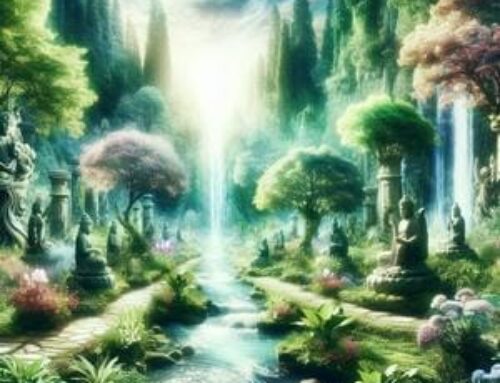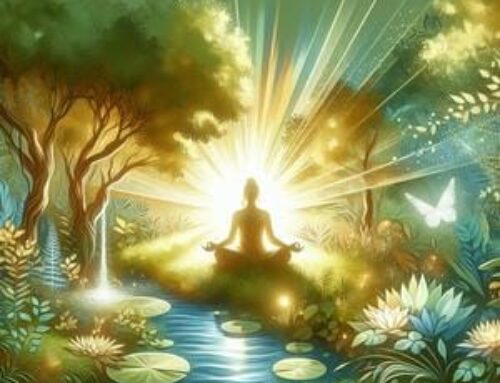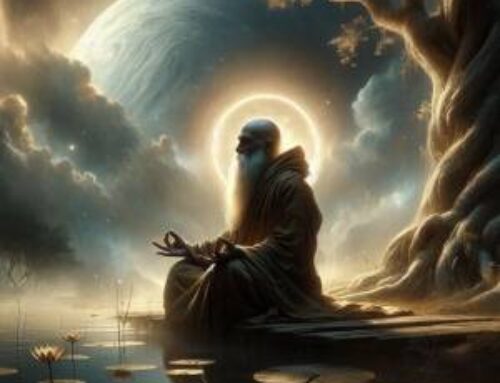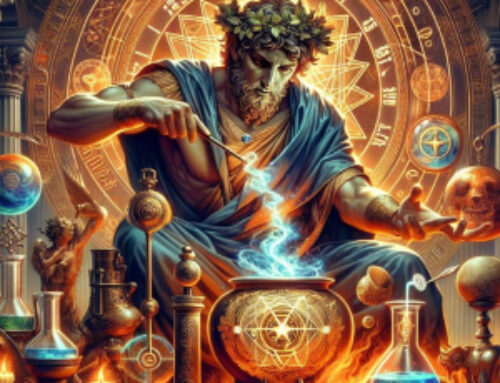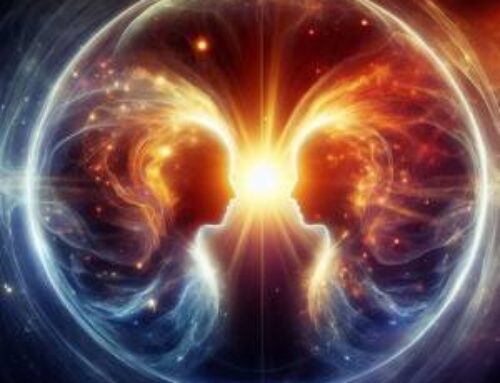Contents
Introduction to Ancient Magick Unveiled
Within the veiled annals of time, ancient magick stands as a cornerstone of esoteric wisdom, a beacon that has illuminated the path of initiates through the ages. This exploration ventures into the sacred realms of forgotten arts, where the spirits of Kabbalah and the mysteries of Hermetic science converge in a symphony of metaphysical revelation. As custodians of this arcane knowledge, we delve into the origins and evolutions of practices that have not merely persisted across millennia but have dynamically sculpted the contours of spiritual inquiry and mystic exploration. In this article we use the term “magick” to distinguish it from illusionary sorcery, which is often called magic.
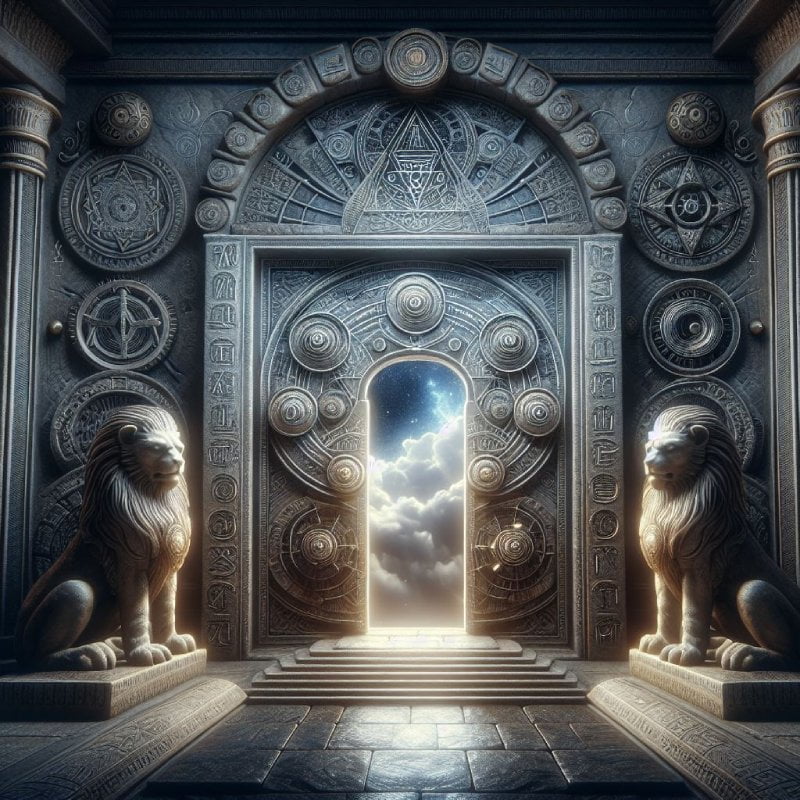
At the heart of our discourse lies the profound symbology ingrained within ancient magick—symbols that serve as keys to unlocking the deeper realms of consciousness and understanding the cosmic dance of creation. The venerable Tree of Life and the enigmatic processes of alchemy are not just elements of study but portals to transcendence, offering a blueprint for navigating the unseen currents that shape our reality.
Embarking upon this path, we extend an invitation to the astute seeker: to peer beyond the veil and rediscover the rich tapestry of ancient magick, as relevant now as it was in the days of its inception. Herein lies the opportunity to not only explore but to transform—guided by the timeless wisdom that bridges the ethereal and the tangible.
Origins and Historical Context of Ancient Magick
Prelude to the Mystical Arts
Ancient magick, as revered and enigmatic as the dawn of civilization itself, has served as a fundamental conduit between humanity and the arcane forces of the cosmos. Rooted deeply in the primordial soils of spirituality, its lineage is traced to the cradle of civilization—Egypt, Mesopotamia, and the sacred lands of the Levant—where priests and sages first etched their knowledge into clay tablets and papyrus scrolls.
Kabbalistic Foundations: The Tree of Life
Central to our understanding of ancient magick is the Kabbalistic Tree of Life, a complex symbol of divine emanation that maps the journey of the soul through the Sefirot (Sephiroth) (1). Each node is a repository of wisdom, channeling the energies of creation and the blueprint of existence. Ten emanations represent the process of creation and the nature of the divine, forming a tree of life structure (2).This mystical schema, embraced by the sages of old, outlines the metaphysical structure of the universe, guiding the practitioner through pathways of enlightenment and transcendental wisdom.
Hermetic Influence: As Above, So Below
The Hermetic tradition, named after Hermes Trismegistus, intertwines with ancient magick through texts like the revered Corpus Hermeticum. These texts expound on the axioms that “As above, so below,” illustrating the mirroring of the macrocosm in the microcosm—an essential principle that shapes the practice of ancient magick. This philosophy not only deepened the understanding of cosmic laws but also provided a framework for alchemical and metaphysical endeavors that sought to transform the soul and the physical world alike.
The Transmission of Esoteric Knowledge
Through the corridors of time, the torch of ancient magick has been passed from adepts to initiates, safeguarded within schools like the Rosicrucians and the Freemasons, who have preserved its doctrines and practices. These custodians of hidden knowledge have ensured that the sacred fires of the magickal arts continue to illuminate paths to spiritual discovery and mystical insight.
Key Philosophical Concepts and Symbols in Ancient Magick
The Philosophical Bedrock of Ancient Traditions
The core of ancient magick is steeped in a philosophy that sees the universe as a living, breathing entity, imbued with a consciousness that magicians and mystics can communicate with and influence. This animistic worldview is foundational, revealing a universe where every element, from the stars in the sky to the stones on the ground, carries an intrinsic magical property that can be harnessed.
Symbols as the Language of the Mystics
In the realm of ancient magick, symbols are not merely representations but are considered potent conduits of energy themselves. The Pentagram, for instance, serves as a symbol of protection and power, encapsulating the elements of fire, water, air, earth, and spirit. Similarly, the Ankh, a symbol borrowed from ancient Egyptian lore, represents eternal life and the mystical knowledge surrounding the death-rebirth cycle.
The Sefirot: Gateways to Cosmic Secrets
Each Sefirah (Sephirah) on the Kabbalistic Tree of Life represents a specific aspect of life, such as wisdom, understanding, and mercy. These are not just philosophical abstractions but are seen as actual spiritual energies that one can interact with through meditation and ritual. The Sefirot embody the divine emanations of God, guiding practitioners on their quest to achieve spiritual illumination and unity with the higher self.
Alchemical Metaphors: Transmutation of the Soul
Alchemy, often seen as the precursor to modern chemistry, holds a significant place in ancient magick, symbolizing the transformation of the soul (3). The alchemical process of turning lead into gold is a metaphor for the spiritual journey of purifying the dense, base aspects of the self into a refined, enlightened state. This transformative process is central to understanding the deeper aims of ancient magick: achieving a profound inner change that reflects in the outer world.
Practical Applications of Ancient Magick in Modern Times
Modern Manifestations of Ancient Magick
Ancient magick, transcending its historical roots, is adeptly interwoven into the fabric of modern spiritual practices. It serves as a vital link to our mystical past, providing not only a historical continuity but also a practical framework for personal and collective transformation.
Spiritual and Personal Development
In the realm of personal growth, ancient magick offers tools for deep introspection and self-improvement. Practices such as initiations, meditation rituals, derived from ancient magick, facilitate a profound connection with the inner self, helping individuals to harness their personal power and achieve a balanced state of mind .
Magick in Healing and Wellbeing
Ancient magick contributes significantly to holistic health practices by incorporating energy work and herbal knowledge that date back thousands of years.
Spiritual journeying is a lifelong process that involves exploring one’s inner self and a larger cosmic consciousness (4).
These methods are employed to align and heal the body, mind, and spirit.
Conclusion
As we traverse the venerable landscapes of ancient magick, we recognize its enduring influence and timeless wisdom. This journey through the realms of mystical practices reveals not only the historical depth of ancient magick but also its vibrant life in the present. It serves as a bridge connecting us to the ancestral knowledge that continues to enlighten those who walk the path of spiritual inquiry.
Ancient magick, with its rich tapestry of symbols, rituals, and philosophies, offers profound insights into the nature of reality and our place within it. By engaging with these ancient practices, we open ourselves to a world of deeper understanding and transformative experiences.
Enter the Magickal Path of Light
For those who seek to explore the mysteries of ancient magick further and to integrate these venerable practices into their spiritual journey, the Hermetic Academy offers comprehensive courses and resources. Join us to deepen your understanding and to continue the legacy of wisdom that ancient magick provides. Embark on this enlightening experience, where timeless wisdom meets modern spirituality.
FAQ – Ancient Magick Unveiled
1. What is ancient magick and how is it relevant today?
A: Ancient magick refers to the mystical practices and philosophies that originated in the ancient world, encompassing elements of Kabbalah, Hermeticism, and alchemy. Despite its ancient roots, this magick remains profoundly relevant, offering tools for personal growth and spiritual exploration in the modern era.
2. What are the main symbols used in ancient magick and their meanings?
A: Some key symbols in ancient magick include the Pentagram, representing the four elements and spirit; the Ankh, symbolizing eternal life; and the Tree of Life, which outlines the path of spiritual ascent and the structure of the universe.
3. Can ancient magick be integrated into daily life for non-practitioners?
A: Yes, ancient magick can be integrated into daily life through simple rituals like meditation or using specific symbols for protection and prosperity. These practices can enhance mindfulness and personal well-being, even for those who do not consider themselves practitioners of magick.
4. Where can I study more about ancient magick?
A: The Hermetic Academy offers comprehensive courses and resources on ancient magick, providing both beginners and advanced practitioners with the opportunity to deepen their understanding and practice of these timeless teachings.
References
(1) Rubenstein, E. (2020). The Tree of Life: The Kabbalah of Immortality. Hermetic World, Paphos.
(2) Mathers, S. L. M. (1887). The Kabbalah Unveiled. London: George Redway.
(3) Rubenstein, E. (2023). Alchemy: Secrets of Consciousness Transformation. Hermetic World, Paphos.
(4) Keegan, L. (1991). Spiritual Journeying. Journal of Holistic Nursing, 9, 14 – 3. https://doi.org/10.1177/089801019100900103.

